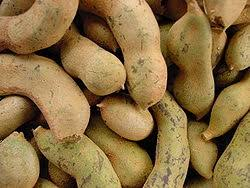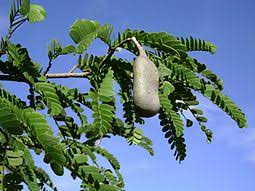Tamarind
Scientific Name: Tamarindus indica
Climate: Hot
Plant Description: It is a long-living but slow growing tropical hardwood tree, evergreen, growing up to 30 m high. It has compound leaves that reach up to 12 cm in length, formed by 10-20 pairs of relatively small leaflets (12-20 mm). Small flowers grow in bunches shorter than leaves; with stamens longer than flowers. Leguminous (bean-like) fruits 5-15 cm long, with the pulpy, acidic fruit with partitions between seeds, about one centimeter thick.
Tamarind is native to tropical Africa, particularly Sudan, but is now widely distributed throughout the tropics from Africa to Asia, Australia and the rest of Oceania. It was introduced to Mesoamerica and South America by the Spanish and Portuguese conquerors in the 16th century. Today, Mexico and Central America are among the largest producers and consumers of the fruit.
Cultivation: It can easily be grown from seed or cuttings. Tamarind seeds remain viable for several months and germinate one to two weeks after planting.
Trees grown in nurseries are usually transplanted during the first rains. With sufficient water and regular cleaning, the seedlings will reach 60 cm in height the first year.
Previously, reproduction has almost always been by seeds sown in the desired place, with the protection of young plants with thorny branches. If transplanting, wait a year and space them 2.5 or 3 meters apart.
To harvest, the pods can be left on the tree for a couple of months after ripening, so that the moisture content drops to 20% or less.
Tamarind needs direct sun. It is necessary to water often so as not to let the soil dry out, especially in summer when temperatures are higher. The tree adapts to and tolerates a great diversity of soil types.
Uses: It can easily be grown from seed or cuttings. Tamarind seeds remain viable for several months and germinate one to two weeks after planting.
Trees grown in nurseries are usually transplanted during the first rains. With sufficient water and regular cleaning, the seedlings will reach 60 cm in height the first year.
Pests and Diseases: One of the main pests of these trees are small insects such as aphids and whiteflies, which cause damage to the fruit and impact the harvest.
En español: Tamarindo

